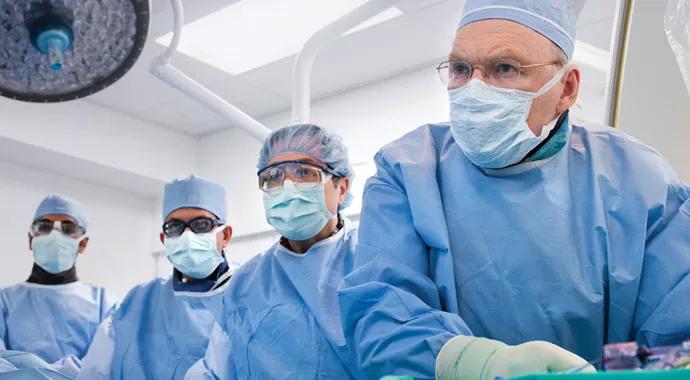
Three years ago, the PARTNER A clinical trial showed transcatheter aortic valve replacement (TAVR) with the balloon-expandable Sapien Valve to be noninferior to surgical valve replacement. At this year’s American College of Cardiology (ACC) Scientific Sessions, results of the CoreValve US Pivotal Trial demonstrated the procedure’s superiority to surgery in high-risk patients. This secures TAVR’s position as the treatment of choice for patients with severe aortic stenosis who cannot undergo surgery and an attractive alternative to standard surgical aortic valve replacement in operable but high-risk patients.
Cleveland Clinic is a non-profit academic medical center. Advertising on our site helps support our mission. We do not endorse non-Cleveland Clinic products or services. Policy
“TAVR is certainly a transformative, disruptive technology, analogous in its impact to how balloon angioplasty changed revascularization,” says Cleveland Clinic cardiologist E. Murat Tuzcu, MD. “It’s a way of treating disease that we couldn’t have dreamed was possible 15 years ago. It provides a definitive treatment for patients who are desperately ill with limited survival, but who are too high risk for surgery.”
The CoreValve trial population included 795 patients with severe aortic stenosis, mean age 83, who were judged too high a risk for surgery by teams of cardiologists and thoracic surgeons. The patients were randomized to TAVR with Medtronic’s self-expandable CoreValve prosthesis or surgery.
At 30 days, the mortality rate was lower than predicted at 3.3 percent in the TAVR group and 4.5 percent in the surgery group At one year, all-cause mortality was 14.2 and 19.1 percent respectively, an absolute risk reduction of 4.9 percent.
The rate of stroke at 30 days and one year was 4.9 and 8.8 percent in the TAVR group, vs 6.2 and 12.6 percent in the surgery group.
Valve stenosis and functional status as seen on echocardiography, as well as quality of life, were equivalent in both groups.
Data from the STS/ACC/TVT Registry, a registry of transcatheter valve therapy (TVT) outcomes sponsored by the Society for Thoracic Surgery and the ACC confirmed that TAVR performs as well in the real world as in clinical trials—sometimes better.
Researchers presented the outcomes of 5,980 Medicare patients, all considered unsuitable for surgery. The in-hospital death rate was 5.3 percent and in-hospital stroke rate was 1.7 percent. Six months after TAVR, 56 percent of patients were still alive and had not been readmitted to the hospital for any cause. At one year, the stroke rate was 3.6 percent and mortality was 26 percent.
“Some degree of aortic regurgitation (AR) is quite common after TAVR with first- generation prostheses. AR–particularly when it is more than mild–is associated with worse outcomes and remains a vexing problem with both FDA-approved valves. “We are working hard to minimize aortic regurgitation,” says Dr. Tuzcu.
Proper selection of patients is now a priority. “TAVR is not for patients at low or moderate risk. Nor should it be used in patients who are very sick and have a short life expectancy, as it’s not fair to them,” says Dr. Tuzcu.
TAVR has been shown to be appropriate for patients who may be operable, but are at significantly high risk, and patients with radiation damage to the aortic valve.
Equally importantly, patient variables that predict early mortality or stroke risk with TAVR have come to light, thanks to the TVT Registry and the French Aortic National CoreValve and Edwards (FRANCE 2) Registry, which also presented its findings at ACC.
Risk factors include advanced age, low body-mass index, NYHA class IV, higher STS risk score (>15), severe chronic obstructive pulmonary disease and renal insufficiency.
Risk was also increased by TAVR performed with transapical access.
These findings will be used to create risk-prediction models that will help physicians determine when TAVR or surgery is the optimal choice. For once, it appears that cardiologists and surgeons will agree on the parameters.
“Suddenly, multidisciplinary collaboration has become a real, tangible concept,” says Dr. Tuzcu.
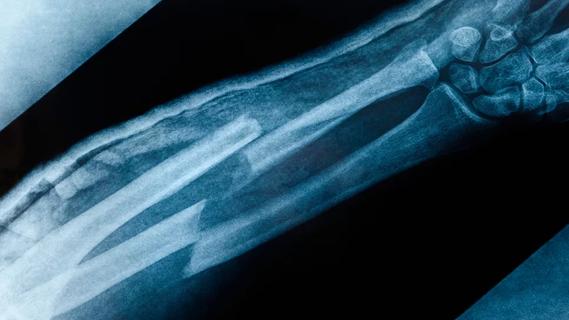
Surprise findings argue for caution about testosterone use in men at risk for fracture

Findings support emphasis on markers of frailty related to, but not dependent on, age
![GettyImages-1252287413 [Converted]](https://assets.clevelandclinic.org/transform/StoryPanel/350804b2-f1e4-4d97-a277-9629cf45af3e/23-HVI-4120348_redlining_650x450_jpg?w=3840&q=75)
Large database study reveals lingering health consequences of decades-old discrimination
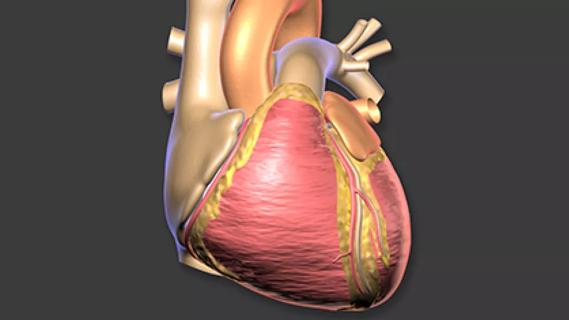
Additional analyses of the two trials presented at 2023 ESC Congress
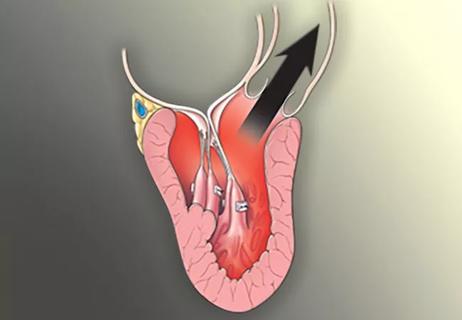
Prospective SPIRIT-HCM trial demonstrates broad gains over 12-month follow-up

An ACC committee issues recommendations to accelerate sluggish progress
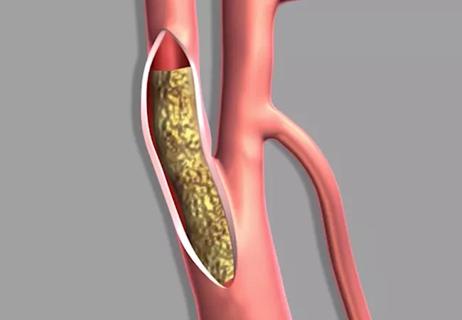
Review of our recent experience shows it’s still a safe option

Machine learning may improve risk prediction and guide therapy